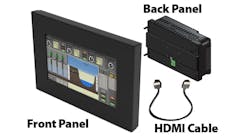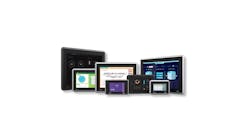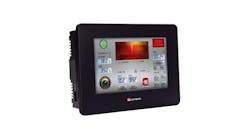Part of our OEM Spotlight series —
Pearson Packaging Systems in Spokane, Washington, has been around since 1955. Its 60-year history started by helping to carry a six-pack of beer, and over time it developed a broad line of packaging equipment primarily for the food and beverage industry. “We specialize in secondary packaging automation and in packages that are difficult to handle, collate and place into a shipping case," notes Dan Aubertin, senior product manager at Pearson.
“Our equipments typically starts once the product is in its primary package at the exit of a form, fill and seal machine or cartoner, for example,” continues Aubertin. "We are known for building robust and reliable package solutions, designed for high volume 24/7 manufactures. The machines are designed to maximize uptime with low maintenance, high productivity and efficiency."
Pearson’s real value is beyond providing individual discrete equipment that erects, packs, seals and palletizes, states Aubertin. "Since 2003, we have been providing end-of-line packing solutions that include conveying, check weight, metal detectors, x-ray machines, reject stations, reflow, hand pack, racking, packing, sealing, palletizing and integrating all the controls," he says. "This turnkey solution is a major value proposition for us and the highest growth segment of the business."
Six decades ago, Founder R.A. Pearson worked at a local brewery in Spokane, Washington. Pearson had the job of opening six-pack carriers manually and placing them on a conveyor where bottles of beer were then automatically placed in them. With this mindless manual job, he had plenty of time to think, so he came up with a machine to open the carriers and put them on the conveyor. He went to the owners of the brewery and presented the carrier erector idea to them. When he asked if they would buy one, they said sure.
It's the typical 1950s garage story. It was built in a garage, the brewery bought it, and it worked, so the company was started. At that time, it was the only automated carrier erector in the world, so they sold thousands of them. It became the de facto standard and the original product still exists today, updated and built for craft brewers.
Also read: Case Study: Vision guides high-speed robotic packaging
Today, Pearson has more than 190 employees. With around 70 of them being engineers, it has new product development, application, mechanical and controls engineering well covered. Service, support, training, spare parts and aftermarket parts are also available to keep the equipment running. Although not an exact count, Pearson has deployed about 18,000 machines in the history of the company.
While the first carrier erector was designed and built in a garage in 1955, they are still in use today.
Source: Pearson Packaging Systems
End-of-line control
"Regardless of the end-of-line machine, Pearson uses a modular control hardware design on all of them," comments Doug Boozer, chief controls engineer at Pearson Packaging Systems. “We try to use industry-standard components to ensure easy integration for our customers, and we have standardized on Rockwell Automation PLCs, HMIs and servos to provide easy integration between major components.”
At Pearson, Ethernet connectivity provides integration with other devices and customer networks, and the connecting of the machines is expanding rapidly. "I am seeing many more machines and complete packaging lines being connected together and to plant networks," notes Boozer. "Many of our complete end-of-line solutions are using EtherNet/IP to handle communication between the machines."
On the software side, Pearson implemented PackML about 10 years ago. "We have taken Rockwell Software's power programming template program that includes PackML and adapted it to fit our machinery along with some of our custom code," says Boozer. "PackML serves a function and would even work well of non-packaging automation, but so far I have not seen many end users taking advantage of it. Even though our equipment is developed to meet the standards, end users still tend to have their own custom set of standards and preferences for how the program and data is formatted."
Pearson is developing a new interface to its machines that is standardized across all models having the same look, feel and options in the interfaces. "We spend a lot of time researching ways to get more additional and accurate information and more help guides into the HMI for the end users," says Boozer. "Our user-centric design reduces the learning curve at the point where they need it. We decided to make our interfaces more advanced and more helpful to assist the often-undertrained operators. It's been a large investment, going on two years for us."
The HMI graphics provide icon-based intuitive navigation for end users, operators and maintenance personnel. The design provides quicker fault recovery, changeover and maintenance procedures. Pearson has a staff of people working on this who are led by an expert in human-centered design and engineering. Its focus is to make equipment more effective and efficient for primary users.







